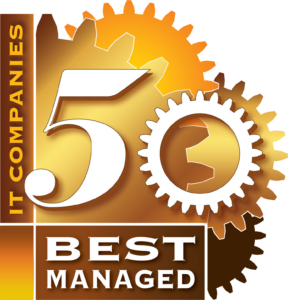
Should We Move to the Cloud or Not? Answering the Big IT Questions
Should We Move to the Cloud or Not? Answering the Big IT Questions
Lots of organizations are asking if they should move to the cloud or stay with on-premise servers.
We hear that question often from existing clients and prospects.
And the answer is… it depends.
Some situations make sense for the cloud. In some situations, however, it makes sense to stay on-premise. And the problem is that a lot of organizations, and a lot of business people, don’t really know what the cloud is.
The fact is that “the cloud” is just another computer. But it’s a computer in somebody else’s data center rather than in your server.
When Should We Consider a Move to the Cloud?
It’s usually a good idea to look at a move to the cloud when your IT infrastructure is due for a refresh.
If there’s a way to move applications to a cloud-hosted application, that often makes a lot of sense, but sometimes on-premise is still the best solution.
Also, there are multiple ways to go to the cloud. You can move everything to the cloud in an all-cloud environment. Some organizations, however, will do a hybrid of cloud and on-premise solutions.
In fact, most organizations are already leveraging some cloud solutions. Website hosting and email went to the cloud pretty early on — and quite a while ago.
Today, most organizations don’t host their website in-house. They work with a website host, which is technically the cloud. They’re already leveraging that and don’t realize it.
Benefits of the Cloud
One of the benefits of the cloud is that it allows organizations to scale. Let’s say you’re planning to grow your organization. Maybe you’re adding people and some new applications. The cloud will give you a lot of flexibility in how you do that.
Also, with the cloud, you’re only paying for what you use. You’re not paying for a massive server that will be underutilized and sit in your server room.
These days, our team at CopperTree leads with the cloud. That said, sometimes there are reasons not to. Our default position is that we’re going to move to the cloud unless there’s a reason not to.
We consider a lot of factors to make that determination. Sometimes legacy applications require on-prem servers. There could also be some resource-intensive applications that are more cost-effective to run on-site.
Cloud vs. On-Premise Server Costs
When you look at the extended life cycle, we’ve found that the costs for cloud and on-premise are about the same.
In an 8-to-10-year lifecycle, for example, on-premise hardware will need to be replaced every five years. But if you run your servers in the cloud, you can run them for the length of the operating system before you have to touch them again. And the benefits from that include not losing time to necessary updates and things like that.
The cloud also gives you flexibility. You pay a fixed monthly cost rather than a big upfront cost. And you can spread that out over a longer period.
Again, some organizations are more likely to have their infrastructure on-premise. We work with some manufacturing organizations, for example, that work with large data sets. Other organizations that produce designs, drawings, or renderings also tend to have a lot of on-premise equipment that depends on accessing their information.
If your entire plant depends on constant access to your systems, it’s probably better to keep the infrastructure on-premise rather than relying on the internet connection.
That’s also somewhat dependent on what kind of internet connection is available. If there are really good redundant options, then that can open the door to doing more cloud at that point.
Choosing the Right Path Forward for Your Business
Companies with limited internal IT expertise rely on organizations like CopperTree for information on what’s available and good infrastructure recommendations.
Part of CopperTree’s strategic planning process is really understanding the business. Our VCIO is part of the strategic planning with our clients, and sometimes joins board meetings depending on the organization’s structure.
In the majority of cases over the last few years, it has made sense to move to the cloud. And a lot of our partners have made that transition.

The cloud also gives our clients more options from a connectivity perspective. It empowers remote work and makes disaster recovery easier.
By involving IT in your strategy and business planning, you can leverage the latest technologies. And when you look at the organizations that are being successful today, they’re leveraging those tools to drive efficiencies, improve communication, and streamline processes within their organizations.



